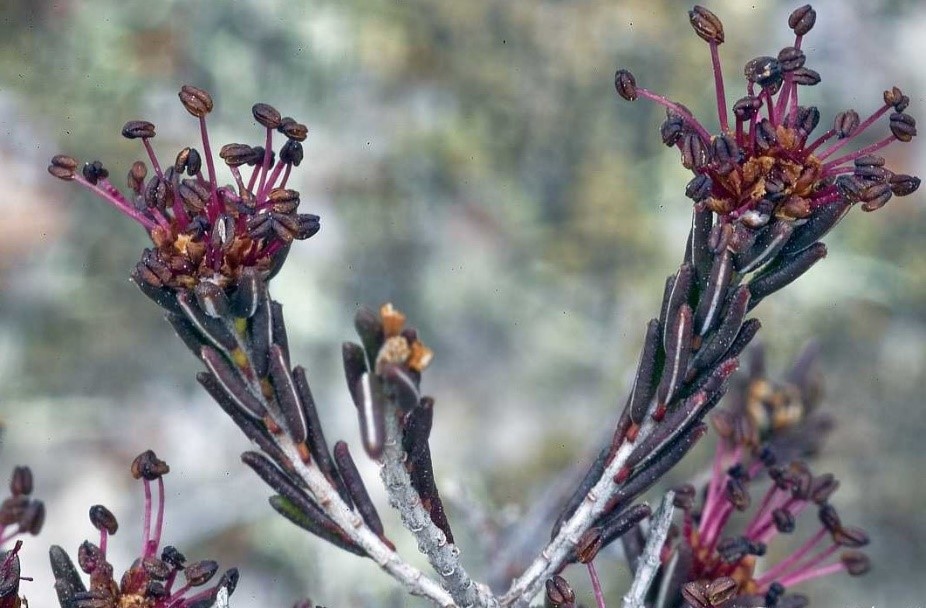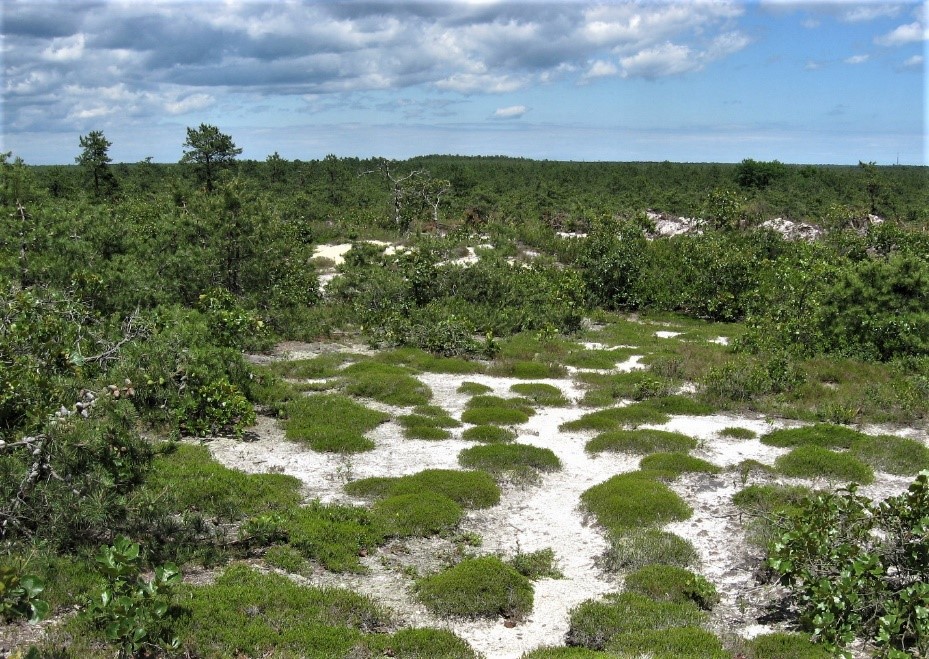|
FOR IMMEDIATE RELEASE |
Contact: Lawrence Hajna (609) 292-2994 |
|
DEP RESTORING HABITAT FOR PINELANDS PLANT FOUND ONLY INTERMITTENTLY (19/P064) TRENTON –The New Jersey Department of Environmental Protection is working to restore habitat in the East Plains Natural Area in Ocean County’s Stafford Forge Wildlife Management Area to boost populations of the state-endangered broom crowberry, a rare plant found only intermittently in the Northeastern U.S. and maritime Canada.
Broom crowberry is a ground-hugging, shrubby plant that has needle-like leaves and purplish blooms. It needs open, sandy areas to grow and has specialized wildfire needs. Historically, broom crowberry grew abundantly in the dwarf pine plains, also known as the pygmy pine plains, of the east-central Pinelands. Natural wildfires and human activities such as charcoaling helped keep these sandy areas open.
While fire is important to creating the open sandy areas broom crowberry needs, wildfires can burn too intensely, killing the plant. “The delicate interrelationship between wildfires and the specialized needs of plant species drives home the critical importance of careful, science-based ecosystem management,” said State Forester John Sacco. In 2018, the DEP began bulldozing “scrapes” on the surface of the soil adjacent to broom crowberry populations in the East Plains Natural Area, creating the environment they need to thrive and expand their population. “Broom crowberry seeds typically disperse only within a short distance, so the scrapes must be placed within several feet of existing populations.” said Bob Cartica, Administrator of the DEP’s Office of Natural Lands Management. “The seeds are thought to be dispersed by ants, a process known as myrmecochory, which could explain the short dispersal range.” These scrapes create acre-sized openings, a feature typical of dwarf pine plains, for broom crowberry seeds to disperse and colonize. Fire lines are also being established around the areas to protect it from prescribed burns and wildfires. Since last year, about 15 acres of scrape and fire lines have been established. DEP scientists will carefully monitor plant colonization, a process that is expected to take a number of years. This DEP management effort includes cooperation by the New Jersey Forest Service, the Office of Natural Lands Management, the New Jersey Division of Fish and Wildlife, the New Jersey Forest Fire Service and other partners. The East Plains Natural Area is part of the state’s Natural Areas System. This system consists of 44 designated natural areas encompassing almost 40,000 acres. Natural Areas are specially designated portions of state parks, forests, wildlife management areas and New Jersey Natural Lands Trust-preserved lands that prioritize natural resource preservation and management over recreational uses. The Natural Heritage Program, part of the New Jersey Forest Service’s Office of Natural Lands Management, identifies and tracks more than 800 endangered and rare plant species as well as rare and unique ecological communities. For a complete list of plant species tracked by the Natural Heritage Program, visit www.nj.gov/dep/parksandforests/natural/heritage/njplantlist.pdf. To view a report on the status and trends of endangered plants in New Jersey, visit https://www.nj.gov/dep/dsr/trends/pdfs/endangered-plant.pdf. For more information on the Division of Parks and Forestry, visit: www.njparksandforests.org Follow the New Jersey State Park Service on Instagram @newjerseystateparks Follow the DEP on Twitter @NewJerseyDEP. DEP PHOTOS/Top: Broom crowberry, Mike Medici; Bottom: Broom crowberry population, Stafford Forge WMA ###
|
|
 In New Jersey, broom crowberry (Corema conradii) exists only in the central Pinelands, mostly in the globally unique pine plains region. This marks the southernmost extent of the species’ range. It can also be found intermittently in parts of Quebec and maritime Canada, Maine, Massachusetts and the Shawangunk Mountains of southern New York.
In New Jersey, broom crowberry (Corema conradii) exists only in the central Pinelands, mostly in the globally unique pine plains region. This marks the southernmost extent of the species’ range. It can also be found intermittently in parts of Quebec and maritime Canada, Maine, Massachusetts and the Shawangunk Mountains of southern New York. But managing the area has become more complex over the years due to the need to protect lives and property from wildfires.
But managing the area has become more complex over the years due to the need to protect lives and property from wildfires.